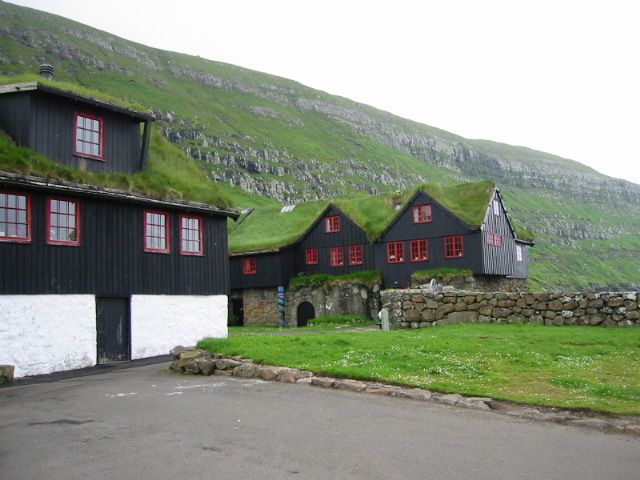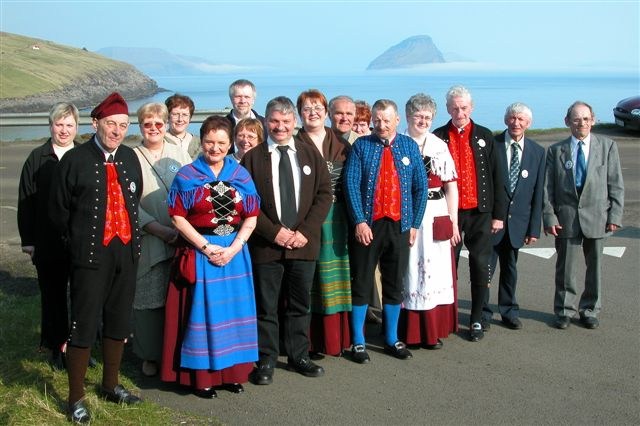ISLAS FEROE- Kirkjubøur
The Faroe Islands are a small archipelago in the north Atlantic between Scotland, Norway and Iceland. These islands are an autonomous country of Denmark, but not belonging to the European Union. They have just under 50,000 residents, of whom about 20,000 live in the capital Tórshavn and its conurbation area.
The Faroese archipelago consists of 18 islands of volcanic origin, of which 17 are inhabited. Its territory is mainly mountainous, with cliffs that are home to tens of thousands of seabirds; is dominated by grasslands and there are no forests. The weather is cold, though moderated by the Gulf Stream. There is sufficient water, but in general the soil is poor and scarce natural resources. The economy depends mainly on fishing and its derivative industry. However, the Faroese society has a welfare state and an index of development quite high.

The roofs covered with a layer of grass are characteristic of several European Nordic countries, a type of construction that can also be seen in Iceland, which has a long tradition in the Faroe Islands. But this town has an even more particular charm. It is a corner full of history and well preserved. It's called Kirkjubøur, and is on the west coast of the island Streymoy. Just is currently populated, but it was an important religious center in the Middle Ages (being Christian bishopric since 999, but its history goes back to Viking times).

The climate is oceanic, marked by the temperate influence of the Gulf Stream, which makes it very smooth considering the latitude. So in Tórshavn no negative monthly averages are observed, ranging from 0.3 ° C in January and 11.1 ° C in August, with an annual average of 6.7 ° C. The temperature range is therefore very low, with mild summers and cold winters. With respect to precipitation, approaching 1,400 mm per year, with a relative minimum in spring and summer. The sky is generally cloudy, with regular presence of fog, sometimes very dense. The strong wind is also common.

In the natural vegetation dominated Faroese arctic plants, grasses, mosses and lichens. Most of the lowland areas is grassland and heather in some cases, mainly Calluna vulgaris.
The natural vegetation is characterized by the absence of trees.

The Faroese has its origins in Old Norse, it is currently one of the Germanic languages with fewer speakers. For some Icelanders and Norwegians in the north-west of Norway, the Faroese is an intelligible language.
The closest the Faroese language was extinct Norn that was spoken in Shetland.

This is the traditional dress of students.
No hay comentarios:
Publicar un comentario